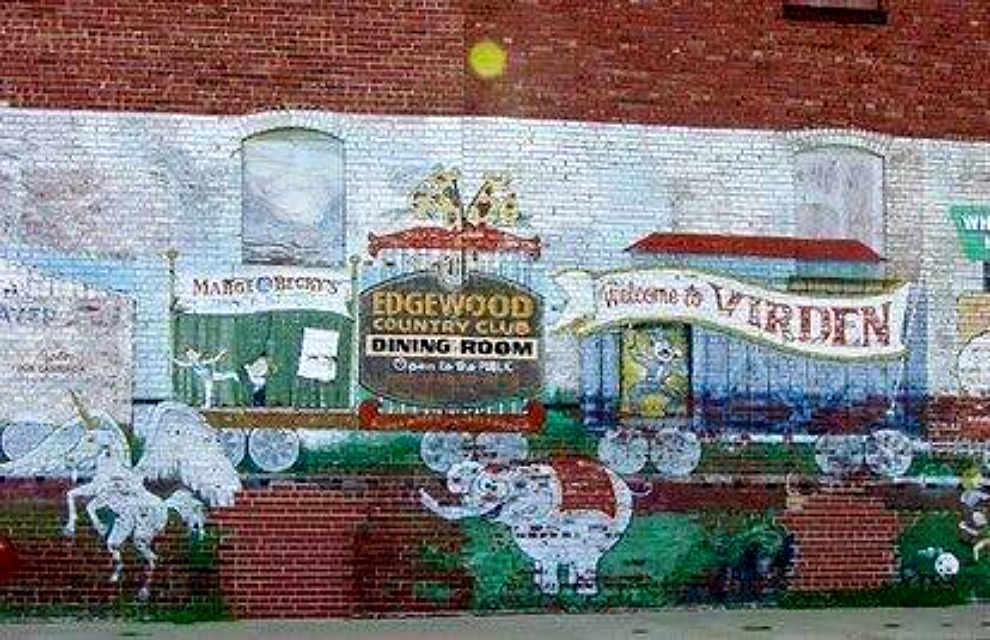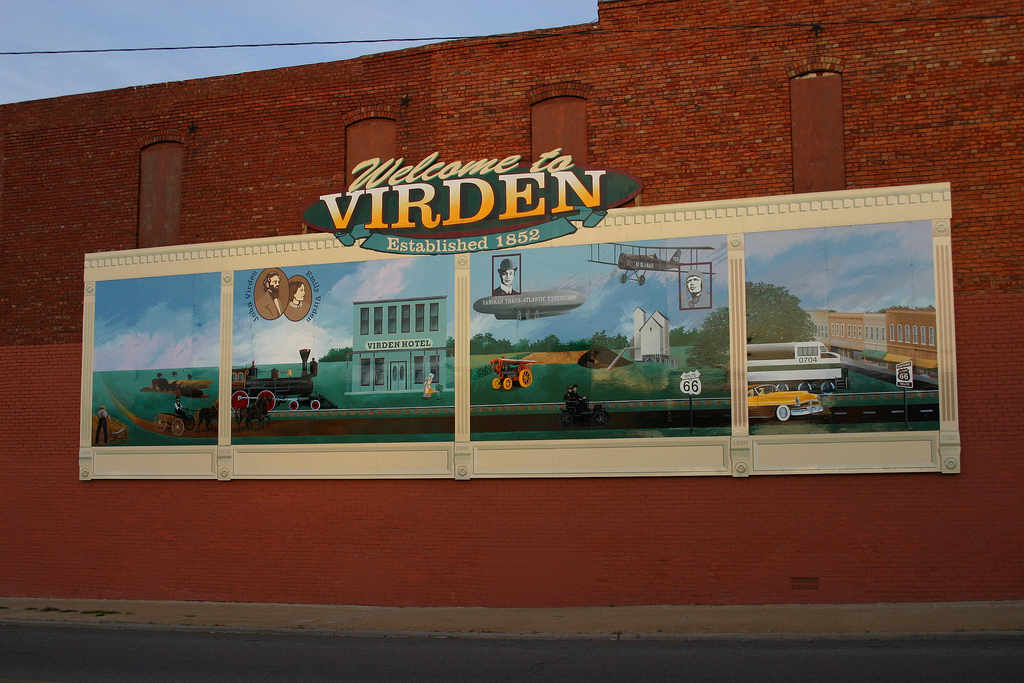On August 27, 2004, the citizens of Virden dedicated a mural depicting the history of Virden. The mural created by Greenville, IL artist John Hubbell graces the west side of the Sav-Mor building on IL Route 4 north on the town square. The 19 by 50 foot mural depicts several events in the history of Virden and the Historic Route 66.
Virden sits on what has been described as the “dividing ridge” meaning the town sits on a high spot in the area. Rainwater drains both to the north and South. This elevation made an ideal place for prairie life, such as buffalo, who could find wallow for a good dust and mud bath. The First Panel of the mural shows what could have been seen before people came to the prairie.
Besides transportation as one of the biggest contributing factors in Virden’s history, agriculture has always been important to the town. You can see a farmer using a scythe to cut grain along the old stagecoach route. When the arrival of the railroad was completed in 1852, officials agreed to name the town after John Virden if he would move his stagecoach stop next to the tracks. John built the first Virden Hotel and Virden received its name. John and his wife, Emily, are pictured on the Second Panel of the mural.
On the Third Panel, the gentlemen pictured by the dirigible is Melvin Vaniman, born in Virden in 1866. After studying at Valpariso University in Indiana, he became a famous aviator, balloonist and photographer. His nickname wqas the “Acrobatic Photographer” shooting images from his hot air balloons, ship masts, tall buildings and more. Vaniman also took up exploring and attempted to make a transatlantic crossing in an airship. He died in the process and is buried in Pleasant Hill Cemetery, between Virden and Girard. Charles Lindbergh is also pictured on the third panel. He had to make an emergency landing in a field just north of Virden and to spend the night. It is reported that Lindbergh gave airplane rides to some local youngsters before taking off.
When the coal miners in their heyday, Virden was at its peak. Miners from many different countries settled here and many of Virden’s families today sprang from them.
As the times changed, so did the main road coming into town. Depicted by the different vehicles, you can see the old stagecoach road became a state highway that was part of the original Route 66 from 1926 to 1930. The Last Panel shows how the downtown square welcomed visitors traveling the “Old Hard Road”.



